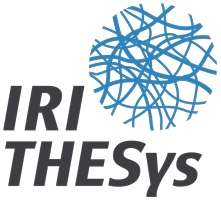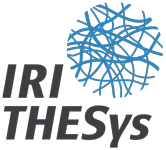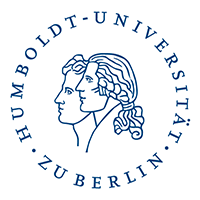The Transformative Power of Fire
Iago Otero Armengol
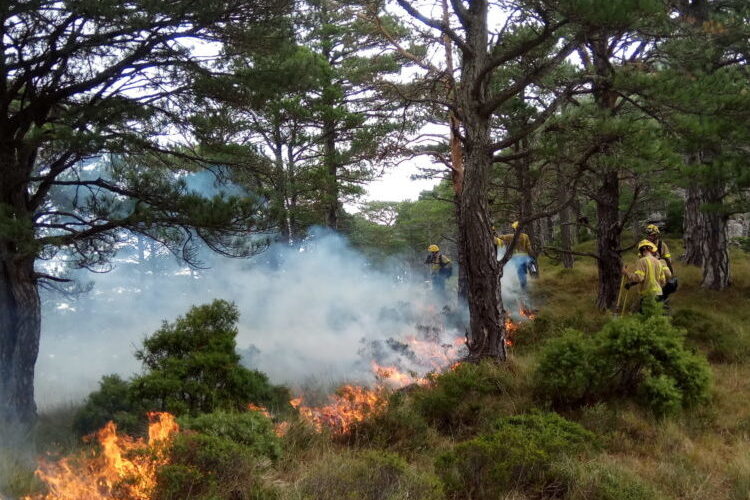
“Fire is not only an element, but also a process of and a symbol for transformation, both on an ecosystem level and a personal level. Just as the forest changes, I can change myself. In a way, fire helps us to better understand our environment and human nature”, Dr. Iago Otero Armengol explains his passion for researching wildfires, which has led him to the topic of proper fire and landscape management in Mediterranean areas.
Iago Otero, postdoctoral researcher at IRI THESys since February 2014, grew up in Catalonia (Spain), a region with an increasing risk of wildfires. Otero has a background in environmental studies and used his PhD thesis, conducted at the Autonomous University of Barcelona, to explore why Catalonia is prone to wildfires. “The reasons can be attributed to the rural-to-urban transformation that occurred in Mediterranean mountain areas within the last decades. Countries like Spain, Italy or Greece changed from mostly agrarian regions with a landscape made of forests, fields, pasture land and villages to mostly industrial and post-industrial regions. People have moved from the countryside to the city in order to work in the industry instead of farming”, says Otero.
Due to abandoned farmlands, recovered and expanded forests and growing cities, this set of social-ecological changes led to the current landscape characterized by different types of areas directly adjoining each other without any protection in-between. On one side, there are fuel-covered woodlands with high amounts of flammable material, on the other side there are vulnerable urban areas. That creates a severe risk and an immense threat for the population. This dangerous situation is aggravated by climate change, another key factor in that scenario. “Firefighters have realized they cannot deal with such a civil emergency, and that’s not an issue of how many helicopters they have”, says Otero. Therefore, new strategies are essential for vulnerable regions.
The fire readers: A new fire unit in Catalonia
Iago Otero’s current research project explores how societies can adapt to an increasing risk of wildfires. He has chosen Catalonia as a case study, focusing on a regional experiment initiated by the foundation of the special firefighting unit GRAF within the Catalan firefighters in 1999. Its task is to advise firefighters on the best strategy to manage wildfires.
“GRAF has several units patrolling every day in high risk areas, always ready to give support in the event of fire, whereas another unit is based at the firefighting headquarters with access to all relevant information such as weather conditions or fire engines’ location in order to coordinate operations”, says Otero. The scientist spent the summer of 2014 accompanying one GRAF team in Southern Catalonia. During his fieldwork he conducted participative observation and interviews with various actors, ranging from GRAF members to other firefighters, local forest protection groups and authorities. According to Otero, GRAF is very influential due to their vast knowledge: “Their expertise is based on experience resulting from fighting all fires during the last 15 years”, says Otero. “That gives them the ability to analyze fire behavior, both in real-life situations and through computer-based simulations. Furthermore, they are in constant contact with other experts worldwide. Their experience and knowledge affords them the ability to influence decision makers and the landscape itself.” One example from last summer shows how GRAF’s decisions will affect the Catalan landscape during the next decades. During a wildfire caused by a lightning, they suggested to let a certain area burn while waiting for the fire at another point due to the risk for the task forces. The suggestion was accepted. “They sacrificed 1000 hectares in order to save another 5000. It was a trade-off and of course a hot topic in the region”, says Otero.
The GRAF experiment is still a contested topic, and some actors are openly against it. That leads Iago Otero to his second research issue of competing visions on wildfires and wildfire management. Through interviews he asks for people’s different visions of an ideal landscape and how they would suggest reaching it. This, of course, is inevitably tied to different policy proposals. “Most people agree on the reasons for the increasing risk of wildfires. But they disagree on the solutions. The main difference is whether people accept fire as an element in the ecosystem or not. Some of them think fire is always something negative that only destroys and harms. Others think that it is more than this, that fire is not necessarily always bad”, says Otero. Some preliminary research on this topic was published in Environment and Planning in the paper Seeing beyond the smoke: the political ecology of fire in Horta de Sant Joan (Catalonia).
According to GRAF’s philosophy, the solution cannot consist of extinguishing large wildfires with an ever-expanding arsenal of engines and human resources, but instead to prevent them. In fact, a new landscape is required, one which allows fires, ecosystems and humans to co-exist. “Fire will be there whether we like it or not. But we can influence its intensity by shaping a landscape that is able to resist fire, that burns less intensively and that can be controlled”, says Otero.
Wildfire prevention: Transforming landscape and society
The intensity of wildfires is mostly related to the amount of flammable materials, which depends on the landscape’s configuration. In earlier times, there were less flammable materials in traditional rural areas than today. People could extinguish fires easily, whereas nowadays it is necessary to reduce the landscape’s capacity to burn by planning. There are numerous ways to achieve that purpose: conservation of agrarian areas or even the creation of new ones, the utilization of old rural activities such as grazing sheep and traditional forestry techniques like coppicing as well as controlled burning during winter time. Those practices change the forest’s fuel structure and can prevent fires while also having very important side effects like protecting biodiversity within agrarian areas, producing fire wood or establishing new social economies that could include distributing organic food at a local level.
“All that depends on the value people attach to nature”, says Otero, who is critical of measuring value in money instead of focusing on an integrated perspective: “Although we know that agrarian areas are important for biodiversity, local food production and wildfire prevention, we do not protect them. But a landscape that is more resilient to wildfires looks radically different from a physical and social perspective. That means, an integrated transformation is necessary, and I wonder what the human-environment-system emerging out of this transformative processes will look like.”
Degrowth: Back-to-the-landers as actors of transformation
There are several practices and processes also in terms of an individuel life design that can facilitate such a transformation – for example reversing the rural-to-urban-movement. So-called ‘back-to-the-landers’ or ‘neo-rurals’ are people without an agrarian background who migrate from the city to the countryside in order to adopt a new lifestyle as an alternative to the current way of life.
“I would not really call the places they move to ‘countryside’, because even though they are rural, they have by now become part of the urban continuum. Therefore it is helpful for both citie’s rural and urban parts, when more people engage in activities such as forestry, agriculture and establishing alternative networks of economics”, says Otero. He has recently published an article about the phenomenon of urban-to-rural-migration in Degrowth. A vocabulary for a new era. “That is part of the transformation we are envisioning within the Degrowth movement. And my role as a scientist is to accompany the debate about landscape transformation and the transition towards a better society.”
Otero actively takes part in the growing Degrowth movement that is based on the principle of shrinking production and consumption. Since 2010, he has also been a member of the group Research and Degrowth Barcelona. Before he moved to Berlin, he also lived in the countryside within the metropolitan region of Barcelona. “Although we had a garden and chickens, that experience was not as engaging as that of the the Back-to-the-landers we refer to in our research, but still there was this idea of moving out of the city and creating something new.” At least in his own fieldwork inside the Catalan forests Iago Otero can still go back to the land.
Contact
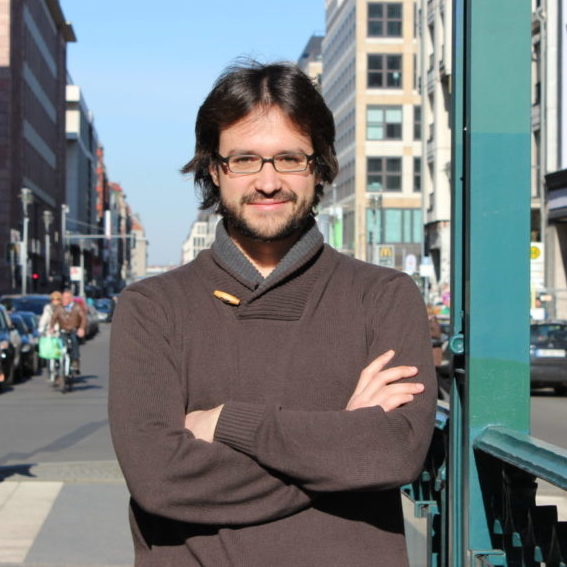
Iago Otero Armengol
From 2014-2017, Iago Otero Armengol was a postdoctoral researcher at IRI THESys working within the project Changing rural-urban linkages across the world. He has a PhD in Environmental Sciences (Autonomous University of Barcelona, 2010) with a thesis on the rural-to-urban social-ecological transformation of Mediterranean mountain areas. After his PhD he worked as an associate researcher at the Institute of Environmental Science and Technology of the Autonomous University of Barcelona.
